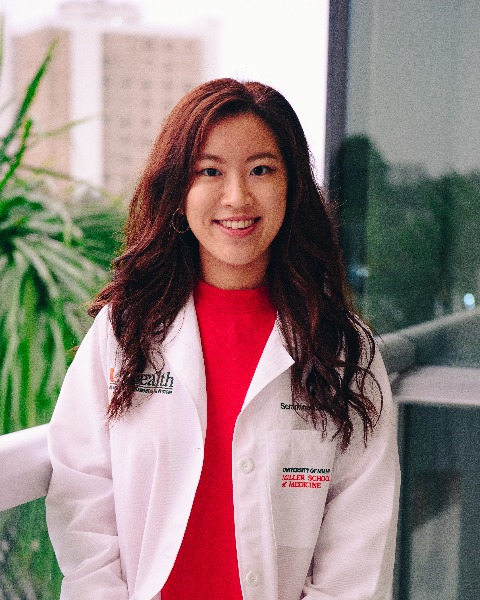Breast
V1: A Multi-institutional Analysis of the Positive Predictive Value of MRI Biopsies in Early-stage Breast Cancer

Seraphina Y. Choi, BA
Medical Student
University of Miami Miller School of Medicine
Miami, Florida, United StatesDisclosure: Disclosure information not submitted.
Virtual Poster Presenter(s)
Methods:
A retrospective cohort study included patients with cTis-T2N0-N1 breast cancer from 2 institutions (NY and FL), excluding those receiving neoadjuvant therapy. A ‘positive’ biopsy result was defined as additional in-situ or invasive cancer (PPVcancer) or histology usually excised (PPVhigh-risk), which included cancer and atypia. The PPV of MRI biopsies was calculated with respect to age, family history, breast density, and histology.
Results: 600 women were treated for ESBC (NY 1/2016-4/2019; FL 4/2020-12/2020) and 465 did not receive neoadjuvant therapy. 314 (68%) had preoperative MRI, and this cohort was more likely to be premenopausal (26% vs. 12%, p< 0.001) and dense (59% vs. 25%, p< 0.001). 161 MRI biopsies were recommended. The PPVcancer of ipsilateral biopsy was 57% (95% CI 47-66%) and the PPVcancer of contralateral biopsy was 22% (95% CI 13-36%). Family history, breast density, and in-situ histology on diagnostic biopsy were not associated with higher PPV. Receipt of MRI was associated with greater time to the OR (65 vs. 46 days) in univariate and multivariate analyses (uni: RR 1.43 95% CI 1.39-1.47; multi: RR 1.31 95% CI 1.25-1.37 adjusted for age, menopausal status, and surgical modality).
Conclusions:
ESBC patients that are younger or have dense breasts are more likely to receive preoperative MRI. However, these factors, along with family history and DCIS on diagnostic biopsy do not appear to have higher yield from additional MRI biopsies. With an increase in time to the OR associated with MRI, we await the results of the randomized Alliance (A011104) trial reporting locoregional recurrence rates in patients that do and do not receive preoperative MRI.
Learning Objectives:
- Discuss patient and disease characteristics that affect the positive predictive values of modern MRI-guided biopsies for early-stage breast cancer patients
- Describe advantages and disadvantages of MRI-guided biopsies for early-stage breast cancer patients
- Report differences in surgical management of patients that do and do not receive MRI
